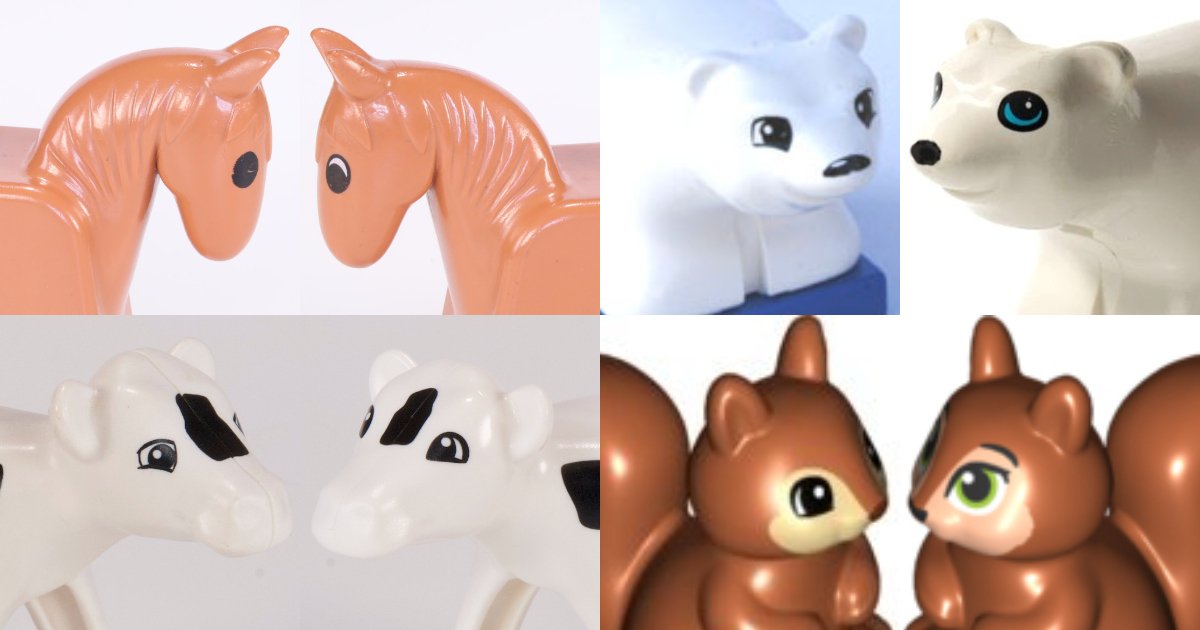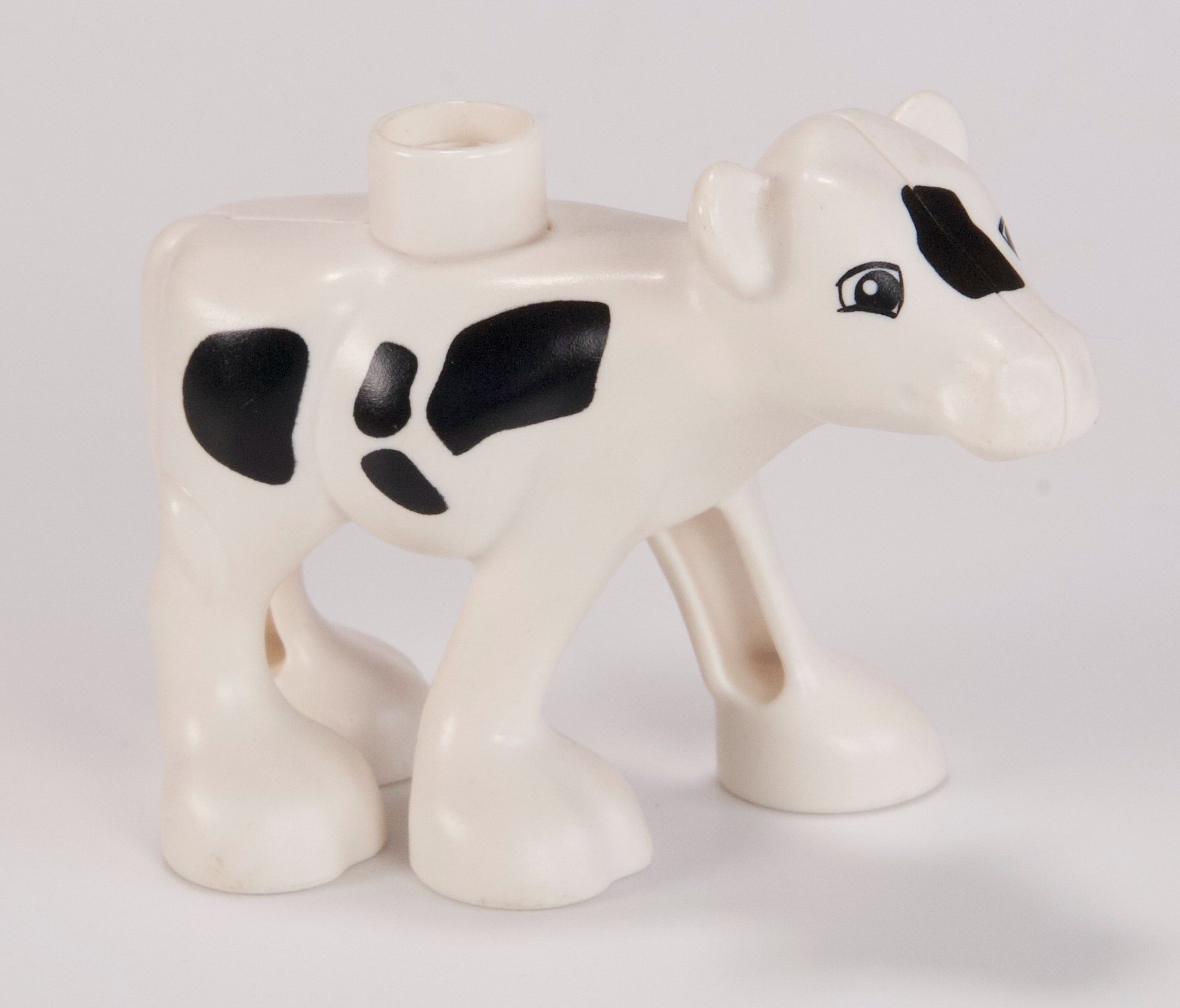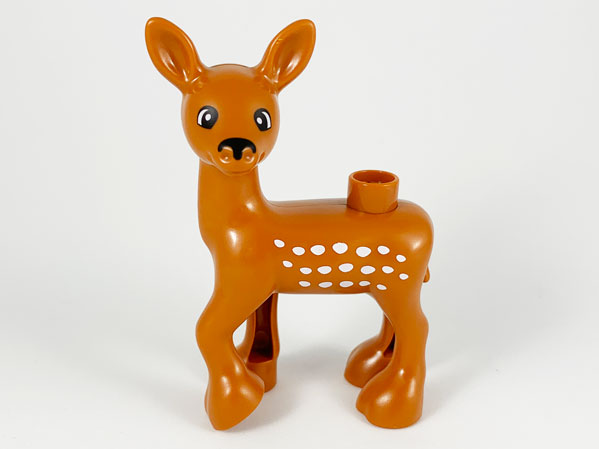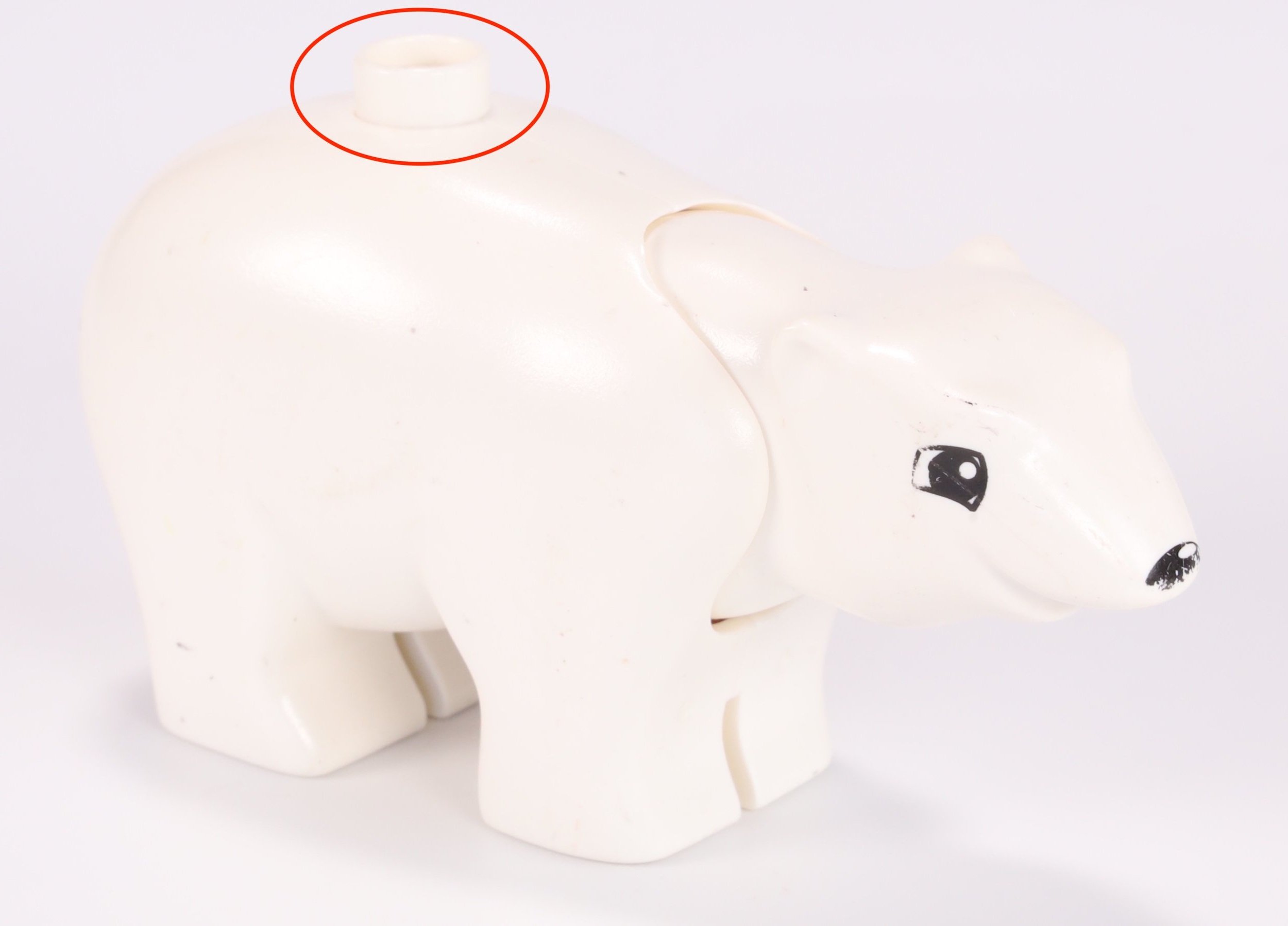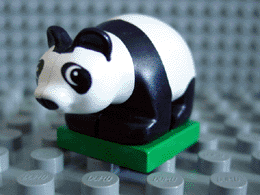Duplo Decoration: The Eyes Have It!
/We’re all (probably) familiar with the fact that the same animal mould* often has multiple colour and decoration variations produced. But those of us who are somewhat obsessed with collecting these glorious creatures, soon become aware that the decoration variations can be subtle and easy to miss.
Collectors of licensed themes are well aware of the discussions that happen when a character gains a new version of their minfigure and how important the differences in their outfit or look can be; quite aside from any change in hair, headgear or accessories. It’s no different for creatures really; the conversations might not be quite so visible, but for those of us deep in this niche, they are just as important.
Creature collectors have to decide how far their own parameters stretch and what that means for their own collections of course, but for me, they all count and are welcome to join my LEGO Beastiary, which is now home to just over 1,800 creatures.
Today I want to concentrate on the eye decoration on Duplo animals and show that there are multiple examples where the mould and colour of the animal are the same and the *only* difference is the eye decoration.
Some Starting Notes
Just a couple of notes on presentation before we kick off:
To allow easier comparison of the eye decoration I have vertically flipped some of the images so that the eyes are closer to each other. The image flipping is the only manipulation these images have received.
Where possible I have used my own photographs. However, lots of the other photographs come from BrickLink and sadly some of them are not that great quality. However, I hope you’ll forgive me in accepting that this niche level of collecting does not always have the best illustrations.
I’ve kept to the BrickLink terminology for the descriptors of the various eye decorations. Hopefully this will help with any further reading/research you might want to undertake. I will note, however, that this is an area that BrickLink has been updating since its takeover by The LEGO Group and so, as always, your mileage may vary.
I have used the ‘XX’ notation in the BrickLink part number to denote that I’m referring to all variations of that part number.
*When I say ‘mould’ I’m talking about the same shape, not necessarily the exact same mould number. That particular nerdery is not mine, but the speciality of some of my fellow BN contributor Francesco Spreafico.
With that out of the way, let’s get cracking!
Horses: Black vs Black-and-White
First up, we have the oldest example we’re going to look at. These lovely horses were released with black eyes and then with black-and-white eyes.
The Fabuland Brown version shown here with black eyes (4009pb01) appears from 1979-1991 and then with black-and-white eyes (4009pb02) in only 2 sets, 1985 and 1991. BrickLink doesn’t list these as alternate parts in the years of overlap, but I imagine they were probably considered interchangeable in the packaging department.
These horses also come in light grey and show similar overlap in released years. The white horse was only released in 1 set, black-and-white eyes, in 1993.
This decoration variation is also seen in other animals of the era; cows (4010pbXX) and sheep (dupsheeppbXX). In total the black eyes were released 1974-1996 and the black-and-white eyes were released 1980-1997—a huge overlap.
Cows & Goats: Squared vs Semicircular
The most prevalent variation is the one shown here in these calves (dupcalf1c01pbXX) and goats (11369c01pbXX). The squared-eye version was released from 2005-2016 and the semicircular eye was released from 2018-2022 (with the calf being square-eyed from 2005-2010 and semi-circular-eyed from 2018-2021, whilst the goat was square-eyed from 2013-2016 and semicircular-eyed from 2018-2020).
This variation is also seen in chickens (87320pbXX), baby giraffes (bb0443c01pbXX), piglets (pig03pbXX) and elephants, both adults (eleph3c01pbXX) and babies (eleph5c01pbXX).
The calves highlight further that the decoration variations often pertain solely to the eyes, despite there being other areas of decoration on the animals. In this case the black markings on the nose and flank are identical whether the calf is square eyed or semicircular eyed.
Deer: White-on-Back vs White-on-Front-and-Back
The deer family unit is interesting. There are far fewer iterations of these forest creatures than other animals. This family first appeared in 2015 with eyes having white-on-back-and-front. But by the time the doe (18595c01pbXX) and fawn (18604c01pbXX) reappear in 2020-2022 their eyes have changed to only having white-on-back.
As with the calves above, both the doe and the fawn retain their other decoration—both noses and white spots on their flanks—irrespective of changes to their eyes.
Interestingly, the buck (18597c02pb01) has reappeared in the recent Duplo wave, but he has not had his eye decoration updated. It’s possible that they massively over-produced him in his first incarnation and so were able to use up that overstock. Alternatively, given his over-moulding to ensure his antlers are not too spiky, they may have decided it was too complex to undertake any retooling of his look.
Polar Bears: Black-Eyes-Squared vs Blue-Round-Eyes
This one seems peculiar to Polar Bears. Black-eyes-squared were released from 1990-2012, whilst the blue-eyed version was around from 1990-2005. Inevitably with such a huge amount of overlap, there are instances when the adult and the cub in the same set have different eye decorations.
The blue-round-eyed version of this cub (2334c02pb01) came in three times the number of sets that the black-eyes-squared (2334c02pb03) version did.
When I started researching this article I knew I wanted to include these guys because the blue eyes were specific to them, and I thought it was a nice example where it was evident across both the adult and the young representations of the animal.
However, when I pulled the pictures of the adult polar bears I noticed that they are in fact not the same mould. The blue-eyed polar bear has the double-stepped Duplo stud on its back whereas the square-eyed one has the non-stepped stud. This is an instance where BrickLink may have gotten its part numbering incorrect as both share the same origin: polarc01pbXX.
Elephants: Eyes-Round vs Eyes-Squared
Another nice example shown in both the adult and the calf share the same change in decoration. Adult elephant (31159c01pbXX) with eyes-round was available in sets from 1998-2002 with its eyes-squared counterpart being available from 2005-2009. The first instance where there is no overlap in years.
Elephant calves (elephc01pbXX) with eyes-round were available in dark bluish grey from 2005-2006 with the eyes-squared version from 2005-2012. Interestingly the eyes-round calf in light bluish grey was released in sets over a much longer period, 1994-2004.
This variation can also be seen in pandas (98232c01pbXX) and penguins (90482pbXX). In the penguin example, there is another decoration change with the addition of a second yellowish-orange mark near the eyes-squared one’s feet.
A Menagerie of Other Eyes
All of the above examples affect more than one animal, or family of animals. Beyond those, there are a few that only show up in a single example.
Firstly, these dogs (1396pbXX). They are identical, even down to their flank markings, but with eyes-top-semicircular and reddish-brown-eyes respectively.
Next up, these panda cubs (2334c01pbXX) with eyes-looking-forwards and eyes-looking-left.
Squirrel! I believe that these nutty creatures (18115pbXX) are the same with black-and-white-eyes and lime-eyes, however, I don’t own a copy of the one with lime eyes and it is possible that its cheeks are in the nougat palette rather than the tan of its black-and-white-eyed friend.
It only seems fitting to finish up back with horses (3426pbXX). BrickLink is unusually succinct in its description of these, noting only that the one with blue eyes has ‘eyelashes’. Both sport a lovely gold mane and tail.
Final Thoughts
I’m not a graphic designer, but I assume that it is possible that the shapes in evidence here follow wider trends in design and eye representation. Beyond that, I am also assuming that the life-cycle of the silicone printing pads used to apply the decoration to the moulds gives opportunities to employ new designs every so often.
There are probably many other examples—venturing outside of Duplo would take a much longer essay! But these are the ones I’m aware of, and I hope that this taster has opened your eyes to the variety of options on offer to the discerning collector.
Have you noticed the difference in eyes between LEGO animals? Let us know in the comments below!
Do you want to help BrickNerd continue publishing articles like this one? Become a top patron like Charlie Stephens, Marc & Liz Puleo, Paige Mueller, Rob Klingberg from Brickstuff, John & Joshua Hanlon from Beyond the Brick, Megan Lum, Andy Price, John A. and Lukas Kurth from StoneWars to show your support, get early access, exclusive swag and more.

